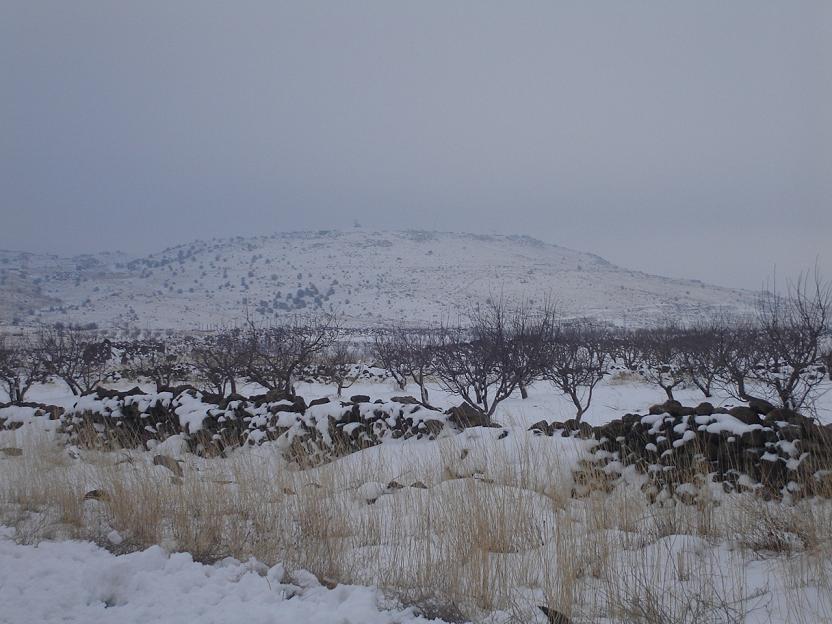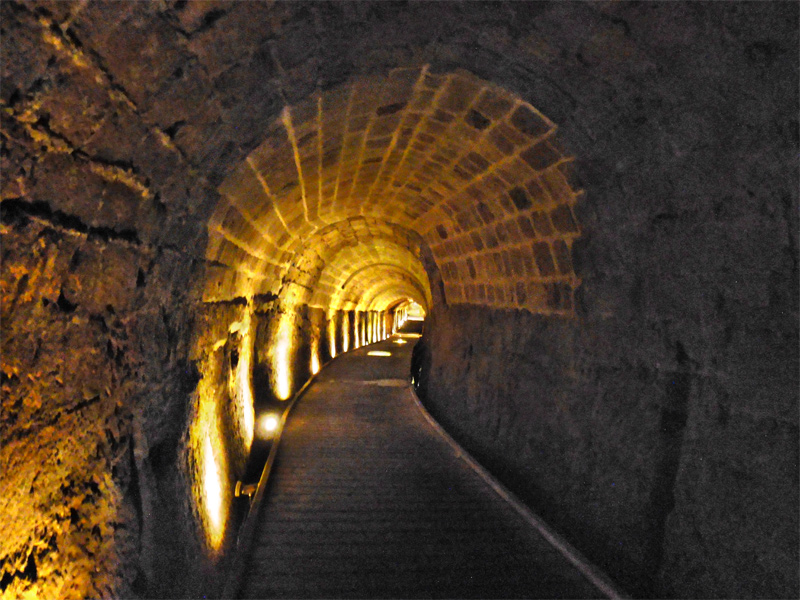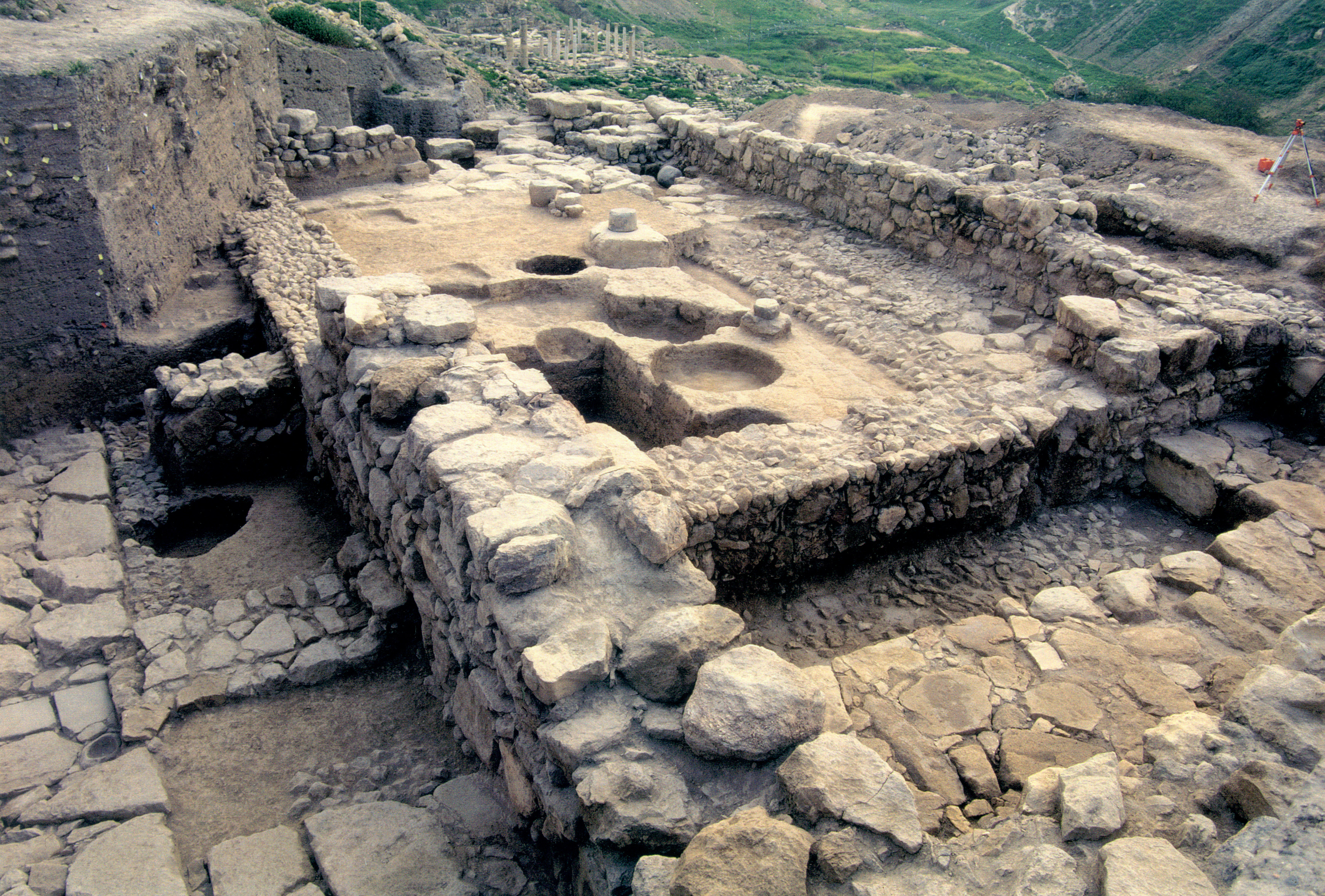|
Jund Al-Urdunn
Jund al-Urdunn (, translation: "The military district of Jordan") was one of the five districts of Bilad al-Sham (Islamic Syria) during the early Islamic period. It was established under the Rashidun and its capital was Tiberias throughout its rule by the Umayyad and Abbasid caliphates. It encompassed southern Mount Lebanon, the Galilee, the southern Hauran, the Golan Heights, and most of the eastern Jordan Valley (especially in the north). Subdistricts and major towns The 10th-century geographer Ibn al-Faqih held that besides its capital at Tiberias, the Urdunn's chief districts (''qura'') were Samaria (al-Samira in Arabic), i.e. Nablus, Beisan, Qadas, Pella (Fahl in Arabic), Jerash, Acre (Akka in Arabic), and Tyre (Sur in Arabic). The geographer al-Muqaddasi (d. 985) notes that the principal towns of the district were its capital Tiberias, Qadas, Tyre, Acre, Faradiyya, Kabul, Beisan, Lajjun and Adhri'at. The 13th-century geographer Yaqut al-Hamawi counted the ''quras'' ... [...More Info...] [...Related Items...] OR: [Wikipedia] [Google] [Baidu] |
Umayyad
The Umayyad Caliphate or Umayyad Empire (, ; ) was the second caliphate established after the death of the Islamic prophet Muhammad and was ruled by the Umayyad dynasty. Uthman ibn Affan, the third of the Rashidun caliphs, was also a member of the clan. The family established dynastic, hereditary rule with Mu'awiya I, the long-time governor of Greater Syria, who became caliph after the end of the First Fitna in 661. After Mu'awiya's death in 680, conflicts over the succession resulted in the Second Fitna, and power eventually fell to Marwan I, from another branch of the clan. Syria remained the Umayyads' main power base thereafter, with Damascus as their capital. The Umayyads continued the Muslim conquests, conquering Ifriqiya, Transoxiana, Sind, the Maghreb and Hispania ( al-Andalus). At its greatest extent (661–750), the Umayyad Caliphate covered , making it one of the largest empires in history in terms of area. The dynasty was toppled by the Abbasids in 750. S ... [...More Info...] [...Related Items...] OR: [Wikipedia] [Google] [Baidu] |
Hauran
The Hauran (; also spelled ''Hawran'' or ''Houran'') is a region that spans parts of southern Syria and northern Jordan. It is bound in the north by the Ghouta oasis, to the northeast by the al-Safa field, to the east and south by the Harrat al-Sham and to the west by the Golan Heights. Traditionally, the Hauran consists of three subregions: the Nuqrah and Jaydur plains, the Jabal al-Druze massif, and the Lajat volcanic field. The population of the Hauran is largely Arab, but religiously heterogeneous; most inhabitants of the plains are Sunni Muslims belonging to large agrarian clans, while Druze form the majority in the eponymous Jabal al-Druze and a significant Greek Orthodox and Greek Catholic minority inhabit the western foothills of Jabal al-Druze. The region's largest towns are Daraa, al-Ramtha, and al-Suwayda. From the mid-1st century BC, the region was governed by the Roman Empire's Herodian and Nabatean client kings until it was formally annexed by the empire in ... [...More Info...] [...Related Items...] OR: [Wikipedia] [Google] [Baidu] |
Tyre, Lebanon
Tyre (; ; ; ; ) is a city in Lebanon, and one of the List of oldest continuously inhabited cities, oldest continuously inhabited cities in the world. It was one of the earliest Phoenician metropolises and the legendary birthplace of Europa (consort of Zeus), Europa, her brothers Cadmus and Phoenix (son of Agenor), Phoenix, and Carthage's founder Dido (Elissa). The city has many ancient sites, including the Tyre Hippodrome, and was added as a whole to the list of UNESCO World Heritage Sites in 1984. The historian Ernest Renan noted that "One can call Tyre a city of ruins, built out of ruins". Tyre is the fifth-largest city in Lebanon after Beirut, Tripoli, Lebanon, Tripoli, Sidon, and Baalbek. It is the capital of the Tyre District in the South Governorate. There were approximately 200,000 inhabitants in the Tyre urban area in 2016, including many refugees, as the city hosts three of the twelve Palestinian refugee camps in Lebanon: Burj el-Shamali, Burj El Shimali, El-Buss refugee ... [...More Info...] [...Related Items...] OR: [Wikipedia] [Google] [Baidu] |
Acre, Israel
Acre ( ), known in Hebrew as Akko (, ) and in Arabic as Akka (, ), is a List of cities in Israel, city in the coastal plain region of the Northern District (Israel), Northern District of Israel. The city occupies a strategic location, sitting in a natural harbour at the extremity of Haifa Bay on the coast of the Mediterranean's Levantine Sea. In the Village Statistics, 1945, 1945 census Acre's population numbered 12,360; 9,890 Muslims, 2,330 Christians, 50 Jews and 90 classified as "other".Department of Statistics, 1945, p4Government of Palestine, Department of Statistics. ''Village Statistics, April, 1945.'' Quoted in Hadawi, 1970, p40 Acre Prison, Acre's fort was converted into a jail, where members of the Jewish underground were held during their struggle against the Mandate authorities, among them Ze'ev Jabotinsky, Shlomo Ben-Yosef, and Dov Gruner. Gruner and Ben-Yosef were executed there. Other Jewish inmates were freed by members of the Irgun, who Acre Prison break, brok ... [...More Info...] [...Related Items...] OR: [Wikipedia] [Google] [Baidu] |
Jerash
Jerash (; , , ) is a city in northern Jordan. The city is the administrative center of the Jerash Governorate, and has a population of 50,745 as of 2015. It is located 30.0 miles north of the capital city Amman. The earliest evidence of settlement in Jerash is in a Neolithic site known as Tal Abu Sowan, where rare human remains dating to around 7500 BC were uncovered. Jerash flourished during the Greek, Hellenistic, Roman, and Byzantine periods, when it was known as Gerasa. It was one of the cities of the Hellenistic cities of the Decapolis.''The New Century Classical Handbook''; Catherine Avery, editor; Appleton-Century-Crofts, New York, 1962, p. 495: "Gerasa... (Modern name: Jerash.) In ancient geography, a city of the Decapolis, in Palestine, about 56 miles NE of Jerusalem... The forum, which is oval and 300 feet long, is surrounded by a range of Ionic columns... A theater has 28 tiers of seats still remaining above ground... A smaller theater on the same site is equally ... [...More Info...] [...Related Items...] OR: [Wikipedia] [Google] [Baidu] |
Pella, Jordan
Pella (, ) was an ancient city in what is now northwest Jordan, and contains ruins from the Neolithic, Chalcolithic, Bronze Age, Iron Age, Canaanite, Hellenistic and Islamic periods. It is located near a rich water source within the eastern foothills of the Jordan Valley, close to the modern village of Ṭabaqat Faḥl () some south of the Sea of Galilee (Lake Tiberias). The site is situated north of Amman: a drive of about two hours (due to the difficult terrain), and an hour southwest by car from Irbid, in the north of the country. Pella's ruins – predominantly temples, churches, and housing – have been partially excavated by teams of archaeologists; they attract thousands of tourists annually but especially in spring, during which time the area is awash with spring flowers. Tourism During the Roman period, Pella was a thriving city with evidence of urban planning, public spaces, and luxurious villas. The city’s location along ancient trade routes contributed to its pr ... [...More Info...] [...Related Items...] OR: [Wikipedia] [Google] [Baidu] |
Qadas
Kedesh (alternate spellings: Qedesh, Cadesh, Cydessa) was an ancient Canaanite and later Israelite settlement in Upper Galilee, mentioned several times in the Hebrew Bible. Its remains are located in Tel Kedesh, northeast of the modern Kibbutz Malkiya in Israel on the Israeli- Lebanese border.Negev & Gibson, eds. (2001), p. 278. The settlement is first documented in the Book of Joshua as a Canaanite citadel conquered by the Israelites and designated as a Levitical city and City of Refuge. In the 8th century BCE, it was captured by Tiglath-Pileser III of Assyria and its inhabitants deported. Jewish tradition holds that Deborah, Barak and Jael were buried near Kedesh. During the 5th century BCE, it possibly became the capital of the Achaemenid province of Upper Galilee. In the Hellenistic period, Kedesh was the site of battles involving Jonathan Apphus and Seleucid king Demetrius II. In the Roman period, Josephus records Jewish attacks on Kedesh during the First Jewish–Ro ... [...More Info...] [...Related Items...] OR: [Wikipedia] [Google] [Baidu] |
Beisan
Beit She'an ( '), also known as Beisan ( '), or Beth-shean, is a town in the Northern District of Israel. The town lies at the Beit She'an Valley about 120 m (394 feet) below sea level. Beit She'an is believed to be one of the oldest cities in the region. It has played an important role in history due to its geographical location at the junction of the Jordan River Valley and the Jezreel Valley. Beth She'an's ancient tell contains remains beginning in the Chalcolithic period. When Canaan came under Imperial Egyptian rule in the Late Bronze Age, Beth She'an served as a major Egyptian administrative center. The city came under Israelite rule in the monarchic period. It probably fell under Philistine control during the time of Saul, when, according to the Bible, his body was displayed there along with his sons. During the Hellenistic period, the settlement was known as Scythopolis (Ancient Greek: ''Σκυθόπολις''). After the region came under Roman rule, Scythopoli ... [...More Info...] [...Related Items...] OR: [Wikipedia] [Google] [Baidu] |
Nablus
Nablus ( ; , ) is a State of Palestine, Palestinian city in the West Bank, located approximately north of Jerusalem, with a population of 156,906. Located between Mount Ebal and Mount Gerizim, it is the capital of the Nablus Governorate and a commercial and cultural centre of the State of Palestine, home to An-Najah National University, one of the largest Palestinian institutions of higher learning, and the Palestine Exchange, Palestine Stock Exchange.Amahl Bishara, ‘Weapons, Passports and News: Palestinian Perceptions of U.S. Power as a Mediator of War,’ in John D. Kelly, Beatrice Jauregui, Sean T. Mitchell, Jeremy Walton (eds.''Anthropology and Global Counterinsurgency,''pp.125-136 p.126. Nablus is under the administration of the Palestinian National Authority (PNA). The modern name of the city can be traced back to the Roman Empire, Roman period, when it was named by Roman emperor Vespasian in 72 CE. During the Byzantine Empire, Byzantine period, conflict between the ci ... [...More Info...] [...Related Items...] OR: [Wikipedia] [Google] [Baidu] |
Samaria
Samaria (), the Hellenized form of the Hebrew name Shomron (), is used as a historical and Hebrew Bible, biblical name for the central region of the Land of Israel. It is bordered by Judea to the south and Galilee to the north. The region is known to the Palestinians in Arabic under two names, Samirah (, ''as-Sāmira''), and Mount Nablus (جَبَل نَابُلُس, ''Jabal Nābulus''). The first-century historian Josephus set the Mediterranean Sea as its limit to the west, and the Jordan Rift Valley, Jordan River as its limit to the east. Its territory largely corresponds to the Hebrew Bible, biblical allotments of the tribe of Ephraim and the western half of Tribe of Manasseh, Manasseh. It includes most of the region of the ancient Kingdom of Israel (Samaria), Kingdom of Israel, which was north of the Kingdom of Judah. The border between Samaria and Judea is set at the latitude of Ramallah. The name "Samaria" is derived from the Samaria (ancient city), ancient city of Sam ... [...More Info...] [...Related Items...] OR: [Wikipedia] [Google] [Baidu] |
Ibn Al-Faqih
Aḥmad ibn Muḥammad ibn al-Faqih al-Hamadani () (fl. 902) was a 10th-century Persian historian and geographer, famous for his ''Mukhtasar Kitab al-Buldan'' ("Concise Book of Lands") written in Arabic. In the 1870s the Dutch orientalist Michael Jan de Goeje edited a selection of geography works of Arab geographers in an eight-volume series titled ''Bibliotheca geographorum Arabicorum'' published by Lugduni-Batavae (Leiden) Brill publishers Brill Academic Publishers () is a Dutch international academic publisher of books, academic journals, and Bibliographic database, databases founded in 1683, making it one of the oldest publishing houses in the Netherlands. Founded in the South .... Al-Hamadhānī's ''Mukhtasar Kitab al-Buldan'' was published in volume 5 of this series. In 1967 second editions were printed by Dar Sadir (Beirut) and E.J. Brill (Lugduni Batavorum). See also * Manuscript 5229. References * Iranian explorers 10th-century Iranian geographers ... [...More Info...] [...Related Items...] OR: [Wikipedia] [Google] [Baidu] |
London
London is the Capital city, capital and List of urban areas in the United Kingdom, largest city of both England and the United Kingdom, with a population of in . London metropolitan area, Its wider metropolitan area is the largest in Western Europe, with a population of 14.9 million. London stands on the River Thames in southeast England, at the head of a tidal estuary down to the North Sea, and has been a major settlement for nearly 2,000 years. Its ancient core and financial centre, the City of London, was founded by the Roman Empire, Romans as Londinium and has retained its medieval boundaries. The City of Westminster, to the west of the City of London, has been the centuries-long host of Government of the United Kingdom, the national government and Parliament of the United Kingdom, parliament. London grew rapidly 19th-century London, in the 19th century, becoming the world's List of largest cities throughout history, largest city at the time. Since the 19th cen ... [...More Info...] [...Related Items...] OR: [Wikipedia] [Google] [Baidu] |





